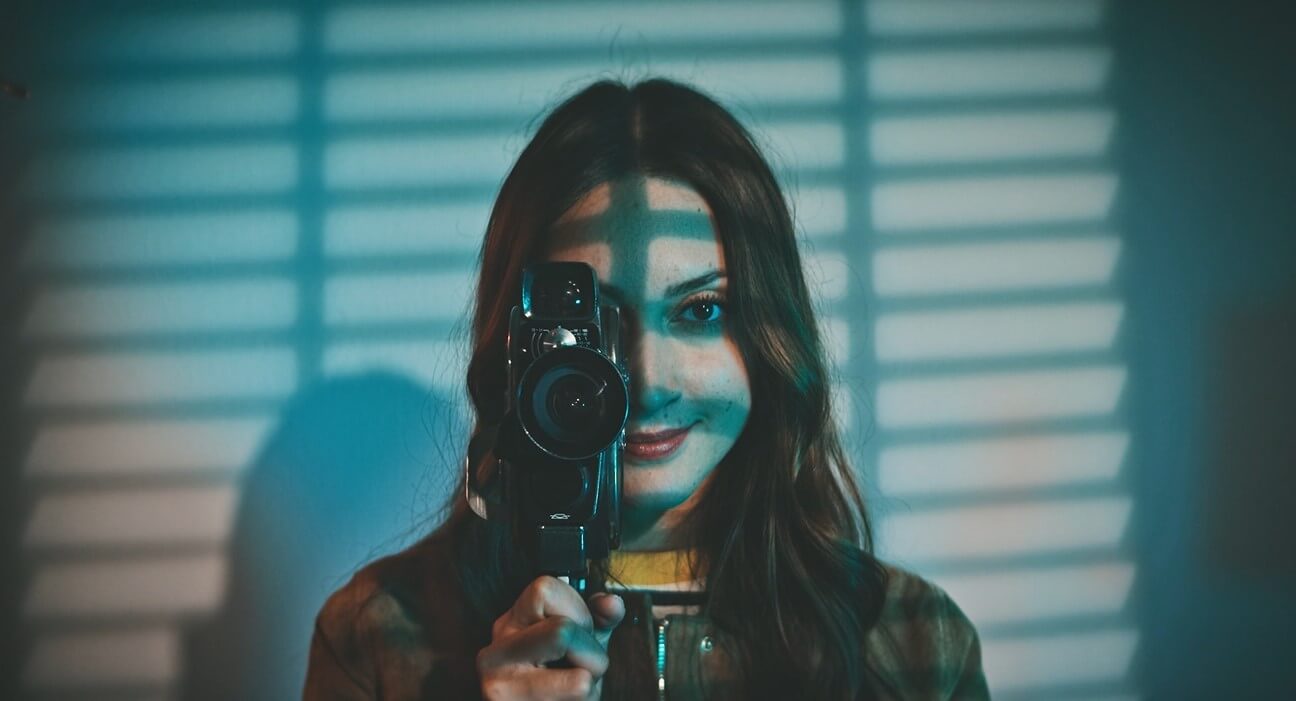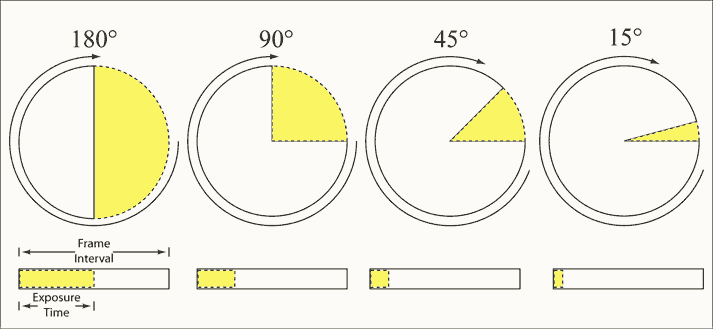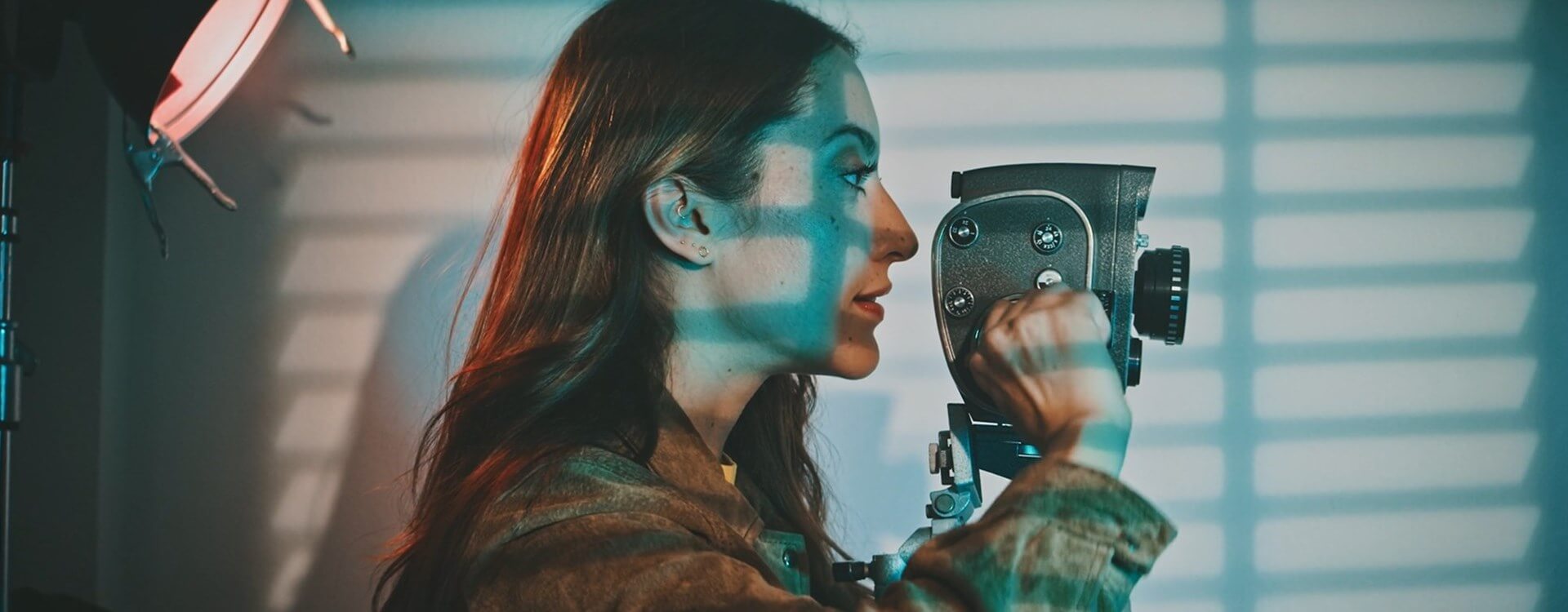Highlights
Table of Contents
Explore article topics
Whether you’re making photographs or videos, doing it digitally or on film, the foundation of the process is the exposure: how long you expose your film or sensor to light. Very simply, the longer the period of exposure, the more light will reach your film or sensor.
In photography, your exposure time is referred to as your shutter speed. You’ll recognize it as something like 1/10 second, 1/50 second or 1/2000 second. A shutter speed of 1/10 second is relatively slow, which lets in lots of light, while 1/2000 second is fast shutter speed.
In filmmaking, you might use shutter speed if you’re shooting with a DSLR, but it’s known as a shutter angle on a cinema camera. Shutter angle is measured in degrees, and usually, it will be 180º. Exactly why it’s called shutter angle will become clear in a bit, as will why you mostly stick with 180º.
Look and feel
How and why you control shutter speed or shutter angle is important: not just because you don’t want your pictures to be too light or too dark if you’re a photographer, but also because it affects the feel of your photos or video.

For photographers, longer exposure times will introduce more motion blur into your images. For creators, a longer exposure time, for example, a shutter angle of 270º, means that one frame blends into the next, giving your video a dreamy quality. A Shorter exposure time – say a shutter angle of 45º – makes for a much more jerky feel, a bit like watching old-fashioned news footage. If you’re shooting an action sequence, you might want to use a narrower shutter angle to not have too much motion blur in the scene.
Generally, filmmakers won’t adjust their shutter speed or angle according to how much light they want or need, though. The impact on a video’s aesthetic is just too great. Instead, they will look to the other elements of the exposure triangle, like their lighting setup and modifiers, and maybe neutral density filters to help adjust their exposure.
Get unlimited royalty-free 4K footage
Shutter angle
Why, though, is exposure time in filmmaking called shutter angle? And why is it measured in degrees and not time? This explanation is rooted in analog cinema camera technology, and if you are recording digitally, the mechanics of it no longer apply. But let’s look at how it evolved, its functions, and why its principles still apply today.
First, a reminder. Your frame rate refers to how many film frames are exposed (or recorded) or played back each second. You will most likely be shooting at 24 or 30 frames per second, but perhaps you might try 48 or 60.

Imagine that you have a disc, which spins on its center point, protecting your film from exposure to light. It’s called a rotating shutter. Each rotation of the disc is one exposure of one frame of your movie. The disc rotates once, and the film moves on one frame. With a frame rate of 24 frames per second, each frame is positioned behind the lens for 0.0417 seconds–that’s 1 divided by 24–which is how long it takes for the rotating shutter to complete a single rotation, too. It will rotate 24 times in one second.
The disc isn’t complete, though. A quarter of it, or 90º, has been cut away. Each time you spin the disc, each film frame is exposed for a quarter of its rotation. That’s known as a shutter angle of 90º. In terms of time, the exposure lasts a quarter of 0.0417 seconds or 0.0104 seconds.
180º shutter angle
While I just used 90º for the sake of an example, films are mostly, but not entirely, shot using a shutter angle of 180º because it tends to give the most natural feel to the footage. A shutter angle of 180º means the disc is actually a semi-circle, and each frame is exposed for half of the duration of the rotation of the disc. Again, in terms of seconds, the precise exposure duration depends on the frame rate.
For a movie with 24 frames per second, a shutter angle of 180º will mean exposure time of 0.0208 seconds for each frame.
Change to a frame rate of 60 frames per second, a shutter angle of 180º will result in an exposure time of 0.0083 seconds. Of course, if you’re using a cinema camera, the actual exposure duration isn’t that important to you. You will be working with the shutter angle. But if you’re using a camera that works with shutter speed, you will have to make some conversions.
Converting shutter angle to shutter speed
We know that natural-looking footage tends to be shot with a shutter angle of 180º. We also know that when you’re shooting with a frame rate of 24 frames per second, the shutter needs to be open for 0.0208 seconds for each frame.
To calculate that as a fraction, which is how we’d usually refer to shutter speed, it’s 1/(2×frames per second), or 1/(2×24), which is 1/48.
As 1/48 is not the standard shutter speed, you would round it to 1/50 second.
So for natural-looking films shot at 24 frames per second, you will need to set a shutter speed of 1/50 second.
If you’re using a frame rate of 60 frames per second, if you want a shutter angle of 180º, you will need a shutter speed of 1/(2×60). As that’s 1/120 second, which most cameras do not support, use 1/125 second.
For an action sequence where you might want to use a narrower shutter angle, say 90º, to help eliminate motion blur, your equation would be:
1/(4×frames per second).
Assuming a frame rate of 24 frames per second, that would be 1/(4×24) or 1/96, and with rounding to accommodate standard shutter speeds, you are looking at 1/100 second.
Don’t be afraid to experiment to achieve the look you want in your short film or YouTube video, but to help you achieve consistency, a good starting place is a 180º shutter angle.
Daniela is a writer and editor based in the UK. Since 2010 she has focused on the photography sector. In this time, she has written three books and contributed to many more, served as the editor for two websites, written thousands of articles for numerous publications, both in print and online and runs the Photocritic Photography School.
Share this article
Did you find this article useful?
Related Posts
- By Daniela Bowker
- 10 MIN READ
Latest Posts
- 25 Apr
- By Josh Edwards
- 4 MIN READ
